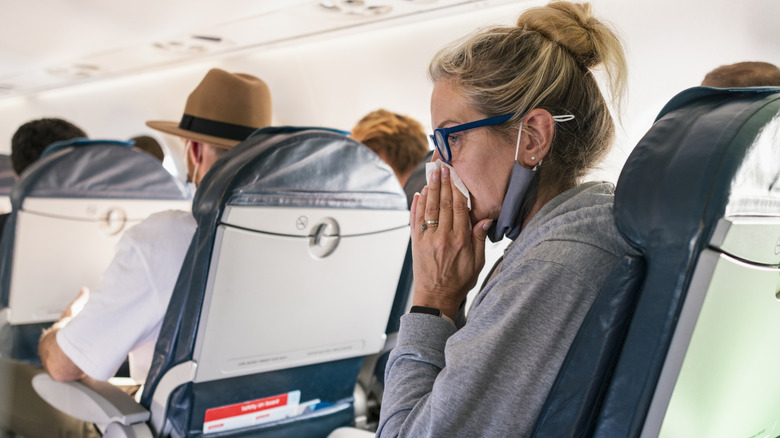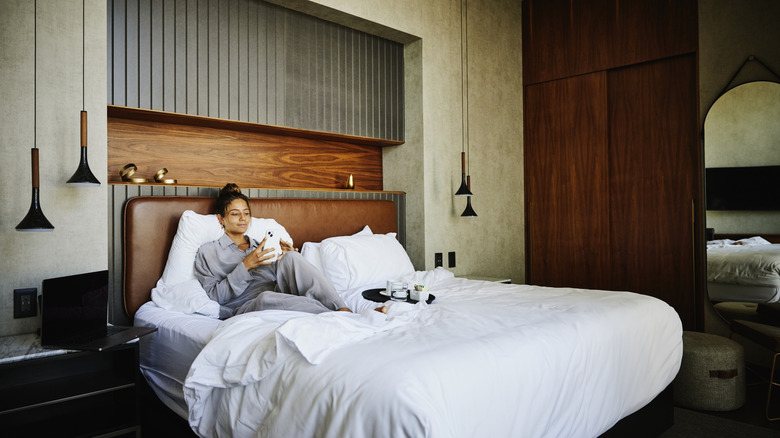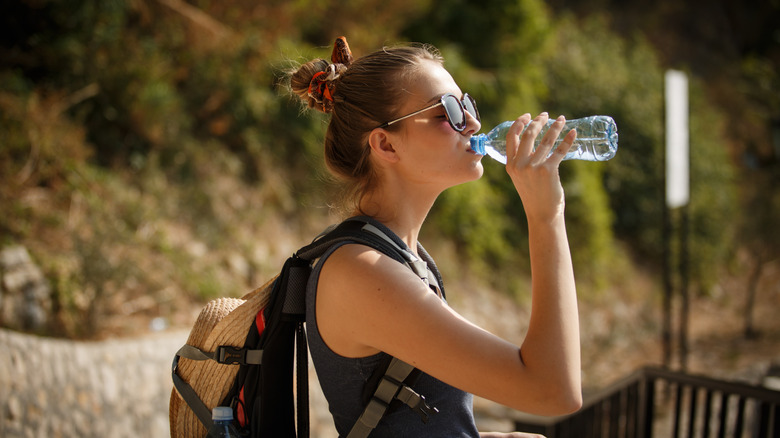The Secrets To Avoid Getting Sick While Traveling Between Different Climates
There's nothing quite as frustrating as waking up in your hotel room with a full day of sightseeing ahead of you only to find your body aching and nose running — but unfortunately getting a cold white traveling is tough to avoid. If you're leaving a warm climate for a snowy skiing adventure or the chilly weather back home for a balmy vacation on the beach, that risk gets even higher. In addition to all the usual risks of getting sick while you're away from home, like exhaustion, changes in routine, or getting exposed to germs on your flight, traveling between climates can open you up to sickness if you don't take the time to help your body adjust after you arrive at your destination and remember to stay hydrated.
To learn exactly why changing climates can lead to sickness and what travelers can do to prevent it, Islands consulted with Dr. Jason Singh, Chief Medical Officer and Physician at One Oak Medical. Dr. Singh explained: "Rapid changes between hot and cold climates force our bodies to quickly shift between different metabolic states ... This rapid switching can temporarily compromise our immune system's effectiveness."
Frustratingly, not only is your body less equipped to fight off diseases, but Dr. Singh explained that you're also more susceptible to them. When you go from hot to cold temperatures (or vice versa) mucus membranes dry out, making you more likely to get sick. "Studies have shown that rhinovirus, for instance, replicates more effectively in cooler nasal temperatures (33-35°C) compared to core body temperature which is why I'm seeing an uptick of rhinovirus infection right now post holiday travel."
What you can do in the first 48 hours to stay healthy
The human body can handle changes in temperature and humidity at home, so what's the difference between surviving the summer heat and winter cold and going from one climate to another? Usually, it happens gradually, but if you hop on a plane and change hemispheres, your body has to adapt to the different climates all at once. Dr. Jason Singh explained that you can make that transition a little easier on yourself, and be less likely to come down with a cold, by taking extra care of yourself in the first 24-48 hours.
First thing in the morning may be the best time to visit tourist hot spots, but Dr. Singh says that sleeping in is better for you in your first two days. Getting a lot of sleep can help keep your immune system strong when you need it most. If you're worried about the transition, you may want to resist the temptation to spend your first day or two sunbathing on a tropical beach if you just came from a chilly winter environment. Dr. Singh suggested: "Spend time in temperature-controlled environments during your first 24-48 hours. This allows [your] body's thermoregulatory mechanisms to adjust gradually."
Always stay hydrated when traveling between different climates
Not staying hydrated on drying airplane trips is a rookie mistake that first-time fliers often make. Even experienced travelers may not realize just how important getting enough water is when you're going from two very different climates. According to Dr. Singh, it can actually be harder to get enough water into your body when quickly moving between two extremes. He explained: "Climate transitions affect fluid balance significantly. In hot climates, we lose water through sweating; in cold climates, we lose moisture through respiratory water vapor."
In addition to packing multiple layers of moisture-wicking clothing and vitamin D3 to stay healthy and warm, Dr. Singh recommends packing electrolyte replacement supplements to help you stay hydrated. If it makes things easier for you, you can also buy electrolyte-balanced drinks — keep airplane regulations in mind, since those beverages aren't exempt from the TSA's 3-1-1 liquid rule. In addition to drinking enough water, Dr. Singh also suggested having a humidifier in your hotel room whenever you're staying in a dry climate.


